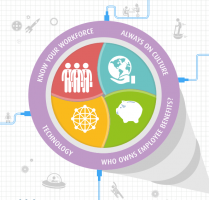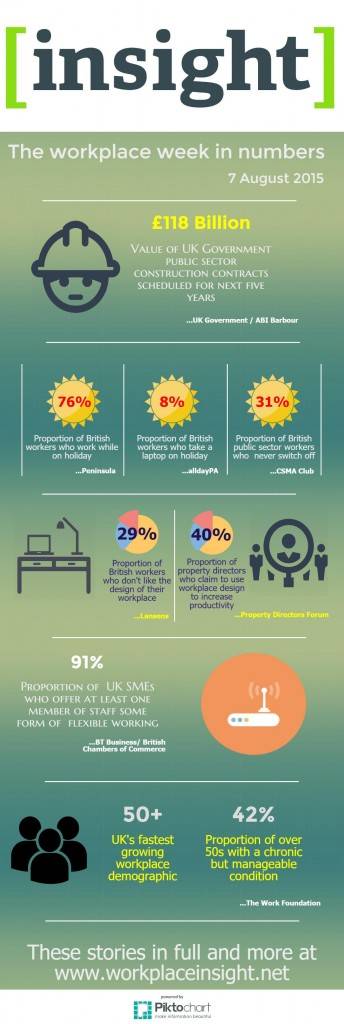August 24, 2015
Flexible working now an almost universal employee benefit, claims study 0
 A new report from employee benefits provider Unum claims to set out the future trends and challenges affecting the benefits packages firms should offer staff. One of the headline claims from the report is that four out of five employers (79 percent) already offer flexible working. ‘The Future of Employee Benefits’ report surveyed 13 organisations and incorporated the results with those of a series of interviews and roundtable discussions with employers and specialists including representatives from the Chartered Institute of Personnel and Development. The report identifies a series of macro trends affecting workplace wellbeing and the recruitment and retention of employees over the next 15 years, which were categorised into four distinct working environments: The Ageless Workplace; The Mindful Workplace; The Intuitive Workplace; and The Collaborative Workplace.
A new report from employee benefits provider Unum claims to set out the future trends and challenges affecting the benefits packages firms should offer staff. One of the headline claims from the report is that four out of five employers (79 percent) already offer flexible working. ‘The Future of Employee Benefits’ report surveyed 13 organisations and incorporated the results with those of a series of interviews and roundtable discussions with employers and specialists including representatives from the Chartered Institute of Personnel and Development. The report identifies a series of macro trends affecting workplace wellbeing and the recruitment and retention of employees over the next 15 years, which were categorised into four distinct working environments: The Ageless Workplace; The Mindful Workplace; The Intuitive Workplace; and The Collaborative Workplace.

































August 18, 2015
That story about sexist air conditioning systems…roundly debunked 0
by Mark Eltringham • Comment, Facilities management, Wellbeing, Workplace
The main story of the silly season so far has been that one about the inherent sexism of air conditioning systems from a week or two back. Based on a study published in the esoteric journal Nature Climate Change, it appeared that standards for heating and ventilation in building systems were founded on the metabolic rate of an average man which suggested women were toiling away in unconducive, if not exactly unbearable, conditions. This was a compelling tale picked up worldwide by major media outlets including The New Yorker and The Daily Telegraph. There were only two problems with it all. Firstly, the original study was extremely flimsy, based on a tiny sample and ignorant of some basic facts. Secondly the science behind it has now been roundly rejected by ASHRAE, the main US body responsible for informing debate on such matters.
(more…)